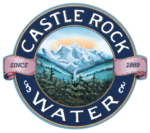Have Questions?
Most Bottled
Water is Local.
Despite what some bottled water critics claim, the fact is most of the bottled water from California sources is sold in California. It is simply not part of the U.S. bottled water industry’s usual business model to ship bottles of water thousands of miles from where it is produced due to high transportation costs.
Bottled water plants are located across the country and produce bottled water for customers in that area. This map shows the location of all IBWA’s member company bottled water plants, which are located throughout the United States and primarily serve customers in their local and regional markets.
In 2014, we have consumed as much water as five households in CA. Here is the report for 2022/2023 Water Reports – Spring, Carbonated, Source
Bottled water is a very efficient use of water.
While overall sales growth and consumption of bottled water has increased as consumers choose water instead of less healthy sugared beverages, bottled water still has the smallest water and energy footprint of any packaged beverage. The results of a 2014 IBWA benchmarking study show that the amount of water and energy used to produce bottled water products in North America is less than all other types of packaged beverages.
On average, only 1.32 liters of water (including the liter of water consumed) and 0.24 mega joules of energy are used to produce one liter of finished bottled water. With bottled water having the lowest energy and water use of all packaged beverages, this healthy choice trend is actually reducing the overall beverage environmental footprint, equating to 6.4 billion gallons of water saved each year.
One hundred percent of bottled water is intended for human consumption; one of the most important and efficient uses of water. Conversely, only about two percent of tap water is used for human consumption. A vast majority of municipally sourced water is used in agriculture, households, and for industrial applications.
The fact is that bottled water production is among the smallest and most efficient of all industry water users.
After years of increased soft drink consumption, American’s growing preference for bottled water has helped people find a path back to water as a healthier beverage of choice. Today people are drinking much more water than soft drinks and both tap water and bottled water are growing.
The bottled water industry supports a strong public water system, which is important for providing citizens with clean and safe drinking water. In fact, many bottled water companies use public water sources for their purified bottled water products. However, purified bottled water is not just tap water in a bottle. Once this water enters the bottled water plant, several processes are employed to ensure that it meets the FDA purified water standard. These treatments may include one or more of the following: reverse osmosis, distillation, micro-filtration, carbon filtration, ozonation, and ultraviolet (UV) light. The finished water product is then placed in a bottle under sanitary conditions and sold to the consumer.
– See more at: http://www.bottledwater.org/california-drought
San Francisco was the first city in America to ban the sale of plastic water bottles, a move that is building on a global movement to reduce the huge amount of waste from the billion-dollar plastic bottle industry.
Over the next four years, the ban will phase out the sales of plastic water bottles that hold 21 ounces or less in public places. Waivers are permissible if an adequate alternative water source is not available.
The ban does not affect water sold in glass bottles. (http://secondnexus.com/ecology-and-sustainability/san-francisco-ban-sale-plastic-bottles/)
